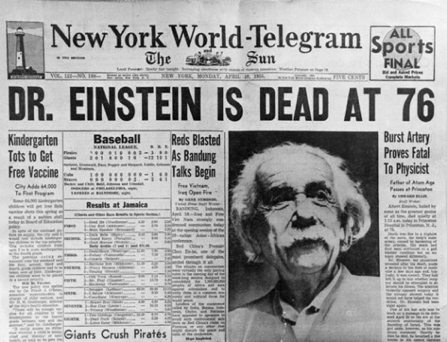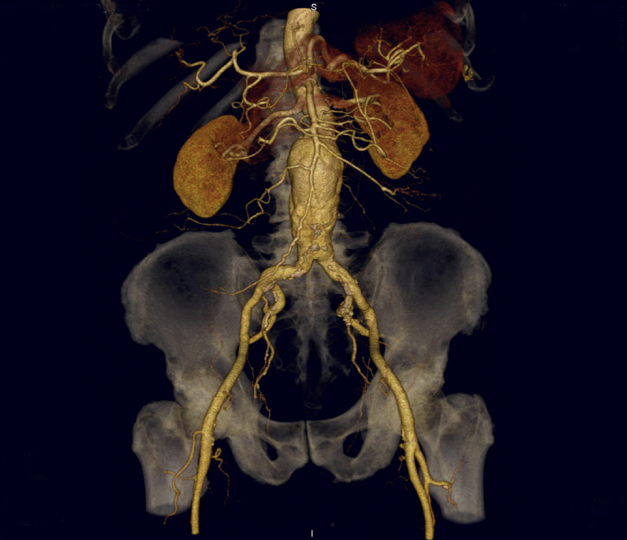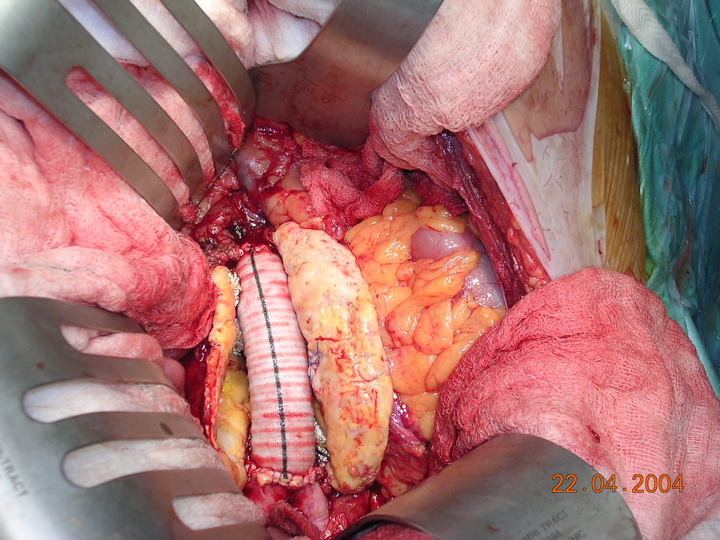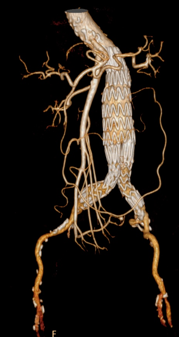Rupture of Abdominal Aortic Aneurysm (AAA): The Disease that Killed Albert Einstein
19 June 2019
The rupture of Abdominal Aortic Aneurysm (AAA) is an abnormal swelling or ‘bubble’ caused by weakness of the wall of the aorta. Albert Einstein, one of the brightest minds in history, died from an abdominal aortic aneurysm on April 18, 1955. This condition is often not detected until it's too late. In this article, we'll explore abdominal aortic aneurysms, their symptoms, and treatment options.

The aorta is the largest artery (blood vessel) within the abdomen which carries oxygenated blood from the heart to the abdominal, pelvic organs and also the lower limbs.
It is typically small at first but progressively increased in size over time. The increase in sizea causes the wall of the vessel to become thinner similar to a balloon being inflated. As it gets larger, it will rupture, and a ruptured aneurysm is often fatal with 70% of patients dying from it.

Recognizing the Symptoms of AAA
Most of the time, there are no symptoms and it is discovered incidentally. The symptoms include:
- pulsing sensation in the upper abdomen
- fullness or discomfort after eating
- constant or intermittent pain in the abdomen
- pain radiating from the lower back into the buttocks and thighs.
The symptoms can be similar to urinary stones except that there is blood in the urine for stone diseases. In about one in every five cases, the first symptom can be pain the abdomen which can imply rupture of the aneurysm. A ruptured aneurysm can be fatal even with medical treatment.
What causes an AAA?
The risk factors for an AAA are not fully understood. They include:
- Gender- men are more commonly affected with 7 men for every women
- Advancing age- most of the patients are in their 70s and 80s
- Cigarette smoking- this contributes to weakening of the wall and increased the rate of growth and rupture
- Hypertension- high blood pressure increases the strain in the artery
- Family history- increased risk if there is a first degree relative with an AAA
- Connective tissue disorders- these are rare
Diagnosing Abdominal Aortic Aneurysms
An AAA can be diagnosed from physical examination and certain radiological tests. Most of the time AAAs are found incidentally when a person undergoes a test for abdominal discomfort, gallstones or urinary stones. But a person with the risk factors stated above or any of the symptoms should see a doctor. An ultrasound of the abdomen can diagnose an aneurysm and depending on the size, a computed tomography(CT) scan will be done.
Not all aneurysm will rupture and the smaller aneurysms can be monitored with serial ultrasounds every 3 to 6 months. Surgery is only required if any of the following is seen:
- Diameter of more than 5.5cm in men and 5.0cm in women
- An increase in size of more than 0.5cm every 6 months
- Abdominal tenderness (this requires emergency surgery)
- Signs of imminent rupture (this requires emergency surgery)
Treatment Options for AAA
The growth of AAAs can be reduced by cessation of smoking and controlling blood pressure but it will never reduce in size. There are two types of surgery for abdominal aortic aneurysms which are open surgery(OR) and endovascular aneurysm repair(EVAR). Open surgery is done under general anaesthesia but EVARs can be done either with general anaesthesia or local anaesthesia. Prior to surgery, the patient is optimised to reduce complications and to ensure a safe procedure.

Open surgery
Open surgery is the traditional and proven method of treating AAAs. It involves an incision over the abdomen to access the aneurysm. The aorta is clamped above and below the aneurysm to stop the blood flow. An artificial blood-vessel graft is sewn in position. The blood then flows through the graft and not through the aneurysm. Circulation is restored and the abdomen is closed. The patient is then transferred to the Intensive Care Unit for observation. This operation takes 3 to 4 hours.

Endovascular Aneurysm Repair
Endovascular Aneurysm Repair involves a small incision or a small puncture over the groin the access the artery. A sheath or a tube is inserted along the artery into the abdominal aorta. This is done under fluoroscopic guidance (X-ray) in the angiographic suite. The stent graft is released from the sheath and it sits firmly on the wall of the aorta. The stents are modular and are assembled in the aorta. The blood thus flows through the stent grafts and not through the stents, thus reducing the size of the aneurysm over time. The incision over the groins are closed percutaneously or via open method. The patient can then be transferred back to the ward if there are no issues during the procedure. This operation will take 2 to 4 hours.
The recovery from open surgery takes longer with patients staying in hospital for up to a week and requiring more pain relief due to the size of the incision. Recovery from EVAR however is faster and patients are discharged after 3 days. However, patients undergoing EVAR will require CT scans every 6 months for the first 2 years to detect any leakage in the seal of the stent graft. The decision for either method of treatment can be discussed with the treating surgeon.






